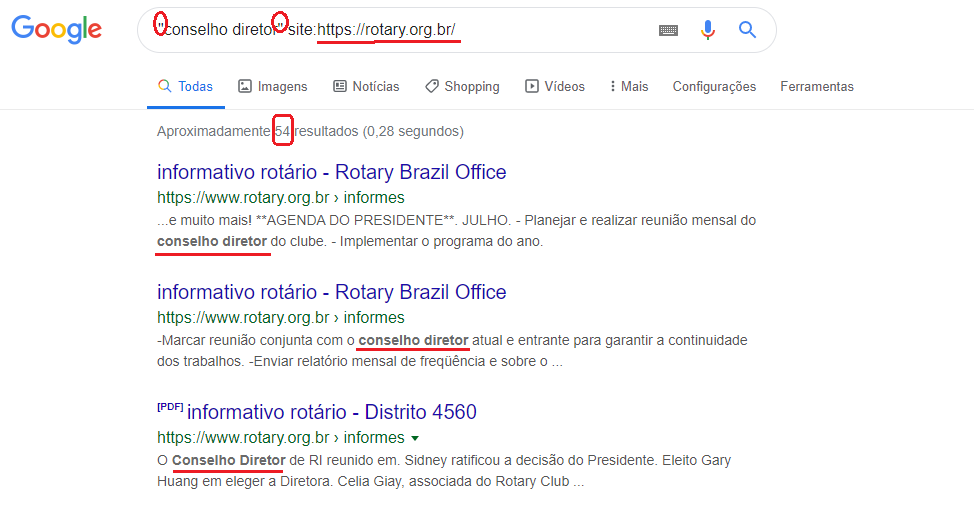Guest post by Marsel de Sousa
Read Part 1 here.
For quite a while, machine translation was the laughing stock of translators, language teachers, linguists… and virtually everyone else. Things have changed quite a lot recently, and the laughs are now less frequent. You can use machine translation in a number of ways – to get the gist of a text in a language of which you have no knowledge – as the raw input for an actual translation that you post-edit, for example. You can also use it as one of the steps in your terminology search.
Let’s take a look at how it works. In our example today, the first step will be to paste a short text about Rotary International on Google Translate:

The next step is to check whether the translations for the key terms (“Board of Directors,” “Board of Trustees,” and “Rotary Foundation”) are consistent with the actual terminology used by Rotary International in Portuguese. In the Google search engine, (1) enter the key term between quotation marks, add one space, and (2) type “site:” (without quotation marks) followed by the URL for the website to which you want to restrict your search (make sure there are no spaces between “site:” and the website address). The search has yielded 54 hits for “conselho director,” and you should check some of them to compare with the context of the text that you are translating.

There are only seven hits for “conselho curador,” and the first hit is actually “Conselho de Curadores,” so now you use this term to perform an additional search.

There are 151 hits for “Fundação Rotária,” and you don’t need to check any of the hits as this is quite unambiguous.

Alternatively, you can use the fields “this exact word or phrase” and “site or domain” on the Google Advanced Search page to perform the searches above.
Although the searches have yielded a very low number of hits, you have to keep in mind that this is restricted to the most authoritative website available. Doing a general search on the web would probably provide multiple, inconsistent results and, therefore, would not be very effective.
Since Google Translate uses the web for its input, it certainly relied heavily on Rotary International’s website, but it may not be entirely accurate at times – and this is why double-checking the terms on an authoritative source’s webpage is so essential. In the three cases above, Google Translate was spot on in the case of “Board of Directors” (54 hits on the Rotary website) and “Rotary Foundation” (151 hits). The Portuguese term for “Board of Trustees” appeared a mere seven times on the website, and this is probably the reason why Google Translate was not so accurate. However, it did point to the right direction anyway.
 Marsel N. de Souza is a full-time interpreter and translator based in Brasilia, Brazil. He has a bachelor’s degree in English>Portuguese translation from the University of Brasilia and a certificate in advanced French studies from Alliance Française. He is also an ATA-certified English>Portuguese translator. He works primarily with the diplomatic and international organization community in Brasilia, but his interpreting and translation assignments have taken him to various parts of the U.K., U.S., Brazil, France, and Africa. He is a member of the International Association of Conference Interpreters.
Marsel N. de Souza is a full-time interpreter and translator based in Brasilia, Brazil. He has a bachelor’s degree in English>Portuguese translation from the University of Brasilia and a certificate in advanced French studies from Alliance Française. He is also an ATA-certified English>Portuguese translator. He works primarily with the diplomatic and international organization community in Brasilia, but his interpreting and translation assignments have taken him to various parts of the U.K., U.S., Brazil, France, and Africa. He is a member of the International Association of Conference Interpreters.

We cannot deny that machine translators are evolving a lot.
I loved these possibilities of using the tool, with the purpose of researching terminologies.
I believe that we translators cannot get stuck. You need to open your mind and see the potential of these tools.